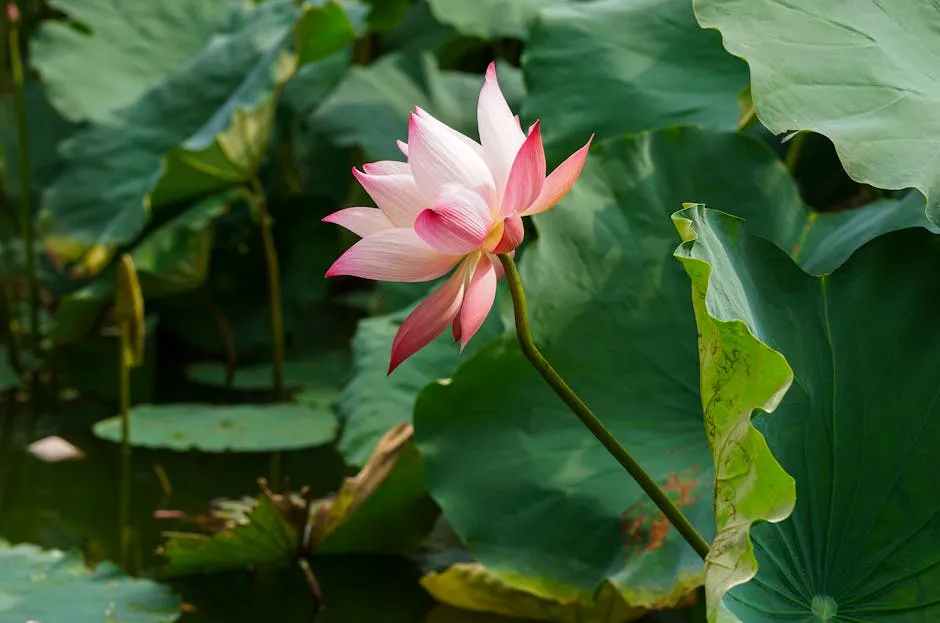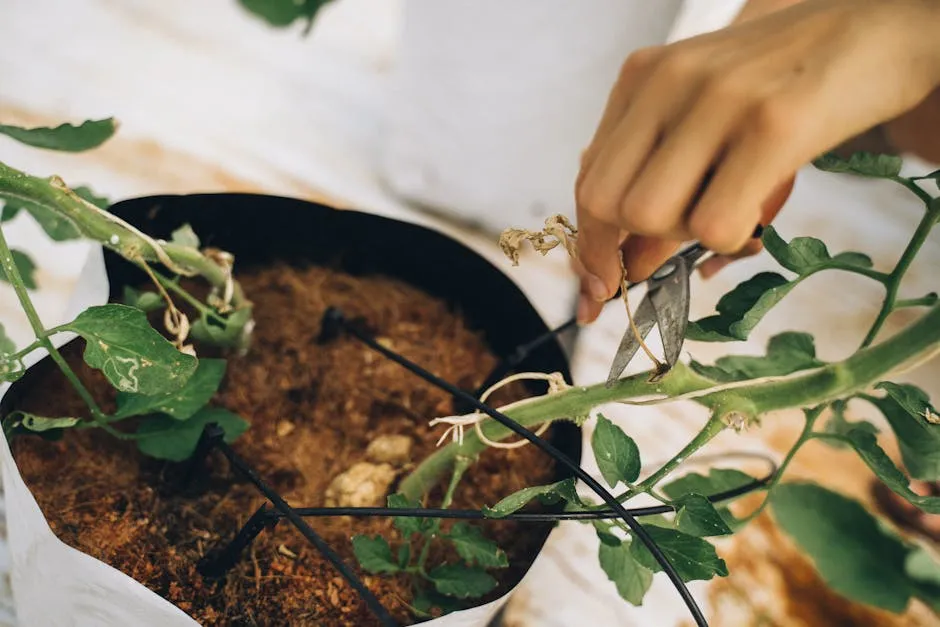

The Complete Guide to Ficus Plants: Care, Varieties, and Benefits
Introduction
Have you ever wondered why Ficus plants are so popular? These beautiful houseplants not only enhance indoor spaces but also play a vital role in our ecosystems. With approximately 850 species in the Ficus genus, there’s a wide variety of shapes, sizes, and uses. From the well-known common fig to the elegant weeping fig, each species contributes uniquely to both nature and human culture. Understanding how to care for these plants is essential for keeping them healthy and thriving in your home.
To kickstart your journey into Ficus care, consider grabbing an Indoor Plant Care Book. It’s packed with tips that will help you become the proud parent of your own Ficus family!

Summary and Overview
Ficus is a fascinating genus, rich in diversity and significance. These plants are integral to many ecosystems, particularly in tropical regions. They provide food and shelter for various wildlife, including birds and fruit bats. The interactions between Ficus plants and pollinators, like certain species of wasps, are essential for their reproduction.
In human culture, some Ficus species hold a special place. The Bodhi tree, for instance, is revered in Buddhism as the spot where Buddha attained enlightenment. This highlights the spiritual and cultural importance of Ficus plants throughout history. Growing Ficus indoors offers numerous benefits. They not only purify the air but also add a touch of greenery that can brighten any room.
By learning about their care and maintenance, you can enjoy all the beauty and benefits these plants have to offer. And when it comes to nurturing your Ficus, consider investing in Well-Draining Potting Soil. A good mix keeps your roots happy and healthy!

Characteristics of Ficus Plants
General Description
Ficus plants share some common traits that make them easily recognizable. Most species feature glossy green leaves that can vary in shape and size. These plants typically have unique inflorescences, which are enclosed in a structure called a syconium. This special feature is key to their reproduction, as it houses tiny flowers that rely on specific wasps for pollination.
Another interesting aspect of Ficus is their aerial roots. These roots can grow down from branches, providing additional support and stability. Ficus plants are incredibly adaptable, thriving in different environments. Whether in bright indoor spaces or shaded outdoor areas, they can flourish with the right care.
As you can see, Ficus plants are not just ordinary houseplants. Their unique features and adaptability make them a fascinating addition to any plant collection. If you’re looking to add a touch of style, check out some Decorative Plant Pots that will show off your Ficus beautifully!

Key Species of Ficus
Ficus plants come in many forms, each with unique traits. Here are three notable species:
- Ficus carica (Common Fig): Native to the Mediterranean region, this species is known for its delicious fruit. People often grow it for its edible figs, which can be enjoyed fresh or dried. The common fig can reach heights of up to 30 feet, making it a striking addition to gardens.
- Ficus benjamina (Weeping Fig): This popular houseplant originates from Southeast Asia and Australia. It features graceful, drooping branches and glossy leaves. Typically growing between 3 to 10 feet tall indoors, it’s favored for its aesthetic appeal and ability to adapt to various indoor conditions.
- Ficus elastica (Rubber Plant): Native to Southeast Asia, the rubber plant is famous for its large, dark green leaves. It can grow up to 100 feet in its natural habitat but usually stays smaller indoors, around 6 to 10 feet. People appreciate it not just for beauty but also for its air-purifying qualities.
These species exhibit diverse growth habits and sizes, making them suitable for different spaces. Understanding their unique needs will help you choose the right Ficus for your home. And don’t forget, a Plant Humidifier can make a world of difference in keeping your Ficus happy!
Growing Ficus Plants Indoors
Ideal Conditions
To thrive, Ficus plants need specific conditions. They prefer bright, indirect light but can tolerate lower light levels. However, insufficient light may lead to slow growth or leaf drop. A temperature range of 60-75°F is ideal. These plants also enjoy humidity levels around 40-60%. If your home is dry, consider misting the leaves or using a humidifier.
Choosing the right potting soil is crucial. Use a well-draining mix to prevent waterlogging. A blend designed for houseplants works well. Drainage is equally important; make sure your pot has holes. This prevents excess moisture, which can cause root rot. And speaking of soil, don’t skimp on quality—grab some Indoor Plant Fertilizer to keep your plants nourished!

Watering and Fertilizing
Watering Ficus plants correctly is essential for their health. Generally, water when the top inch of soil feels dry. Depending on your environment, this may mean watering every 1-2 weeks. Always use room-temperature water and ensure it drains out of the bottom.
For fertilizing, use a balanced liquid fertilizer every 4-6 weeks during the growing season (spring and summer). This helps encourage healthy growth and vibrant foliage. In the fall and winter, reduce feeding since the plant’s growth slows down. Adjusting your care routine with the seasons will keep your Ficus thriving.
By providing the right conditions, watering, and nutrition, your Ficus plants will flourish indoors, adding beauty to your home while improving air quality. And if you’re looking for a fun way to keep track of your plant care, consider a Houseplant Journal to document your journey!

Pruning and Maintenance
Keeping your Ficus plant healthy requires regular pruning and maintenance. Pruning helps maintain its shape and encourages bushier growth. Start by removing any dead or yellowing leaves. This not only improves appearance but also prevents disease.
To prune, use clean, sharp scissors or Pruning Shears. Make cuts just above a leaf node to stimulate new growth. It’s best to prune in spring when the plant is actively growing. Aim to reshape your plant gradually, removing no more than a third of the foliage at once.

Pest control is another important aspect of maintaining Ficus plants. Common pests include spider mites, aphids, and scale. Regularly inspect your plant for signs of infestation. If you spot any pests, act quickly. A gentle spray of water can dislodge many of them. For stubborn pests, consider using insecticidal soap or neem oil. Always follow the product instructions for safe application.
Disease prevention is crucial as well. Overwatering is a common issue that can lead to root rot. Ensure your pot has proper drainage to avoid waterlogged soil. If you notice any signs of disease, such as leaf spots or wilting, remove affected leaves immediately. This helps prevent the spread to healthy parts of the plant.
By staying on top of pruning and pest management, your Ficus plant will thrive and remain a stunning addition to your home. And remember, a Soil Moisture Meter can help you determine the perfect time to water!

Aesthetic and Psychological Benefits
Ficus plants are a popular choice for home decor. Their lush, green leaves bring life to any room. They come in various shapes and sizes, making them versatile for different spaces. Whether you prefer the tall, elegant Ficus elastica or the bushy Ficus benjamina, there’s a perfect fit for you. These plants not only beautify your home but also create a calming atmosphere.
Indoor plants, like Ficus, can significantly boost your mental health. Studies show that having greenery around improves mood and reduces stress. Have you ever noticed how a simple plant can brighten your day? It’s not just your imagination! The presence of plants can enhance feelings of tranquility and happiness. Additionally, caring for a plant can provide a sense of purpose and accomplishment.

Common Problems and Solutions
Pests and Diseases
Ficus plants can face a few pesky problems, particularly pests and diseases. Some common culprits include spider mites and aphids. Spider mites are tiny, often invisible, but they can cause significant damage. They create fine webs and suck the sap from leaves. Aphids, on the other hand, cluster on new growth and can lead to distorted leaves.
Root rot is another concern, usually caused by overwatering. It manifests as wilting leaves and a foul smell from the soil. To combat these issues, regular inspections are vital. For pests, a simple spray of water can dislodge many. If infestations persist, consider insecticidal soap or neem oil as effective treatments.
Preventing these problems requires proper care. Ensure your Ficus has good air circulation and avoid overcrowding plants. Always check for signs of pests before bringing new plants home. For root rot, make sure your pot has adequate drainage to prevent water buildup. A well-draining potting mix is essential for healthy roots.

Leaf Drop and Other Issues
Leaf drop can be a common issue with Ficus plants, and several factors might be at play. One major reason is changes in environment, such as moving the plant to a new location. Sudden temperature shifts can shock the plant, causing leaves to fall off. Another reason could be underwatering or overwatering. Always check soil moisture before watering.
Stunted growth can also occur, which may indicate that your plant is root-bound. This happens when roots outgrow their pot, limiting growth. If you notice yellowing leaves, this may signal a nutrient deficiency or improper watering. To address these issues, repot your Ficus in fresh soil if it’s root-bound. Adjust your watering habits based on the plant’s needs, ensuring you’re neither underwatering nor overwatering.
By paying attention to these signs, you can keep your Ficus healthy and thriving. Regular care and observation will help you identify and address potential problems before they escalate. And if you want to keep things organized, consider using Plant Labels to mark your plants’ progress!

Cultural Significance of Ficus
Historical Context
Ficus plants hold a rich historical significance across various cultures. In many ancient societies, they were revered for their utility and symbolism. The common fig (Ficus carica) is one of the first cultivated plants. Evidence shows it played a crucial role in agriculture, providing sustenance to early civilizations.
In addition to their agricultural value, Ficus species have spiritual importance. For instance, the sacred fig (Ficus religiosa) is significant in both Buddhism and Hinduism. It is famously known as the Bodhi tree, where Siddhartha Gautama attained enlightenment. This cultural reverence highlights the deep connections between Ficus plants and human spirituality.

Around the world, Ficus species continue to symbolize prosperity and peace. Their presence in homes and gardens often represents a connection to nature and a reminder of our roots. Embracing these plants not only enhances our living spaces but also honors a rich cultural legacy. And hey, if you’re looking to spruce up your decor, an Indoor Water Fountain can also add to the ambiance!
Spiritual Importance
Ficus species hold deep spiritual significance in various religions. In Buddhism, the sacred fig, known as the Bodhi tree, symbolizes enlightenment. This tree is where Siddhartha Gautama, the Buddha, attained nirvana. People often visit Bodhi trees for meditation and reflection, seeking inner peace and wisdom.
In Hinduism, the Ficus religiosa is also revered. It’s considered a symbol of fertility and longevity. Many Hindus plant these trees near temples, honoring their cultural and religious values. The shade of a Ficus tree provides a serene space for worship and community gatherings.
These trees are more than just plants; they are living testaments to spiritual journeys and cultural heritage. Their presence in religious practices emphasizes a connection to nature and the divine. And for a little extra zen, consider a Meditation Cushion to enhance your practice!

FAQs
What is the best light for Ficus plants?
Ficus plants thrive in bright, indirect light. Too much direct sunlight can scorch leaves, while too little light slows growth.
How often should I water my Ficus plant?
Water when the top inch of soil feels dry. This usually means every 1-2 weeks, depending on your home environment.
Can Ficus plants be grown outdoors?
Yes, Ficus plants can grow outdoors in suitable climates. They prefer warm temperatures and well-drained soil.
What are the signs of a healthy Ficus plant?
Healthy Ficus plants have vibrant leaves, sturdy stems, and steady growth. Yellowing leaves or drooping may indicate stress.
How do I revive a dying Ficus plant?
Check for root rot or pests. Adjust watering schedules, prune dead leaves, and ensure adequate light to help recovery.
Are Ficus plants toxic to pets?
Some Ficus species can be mildly toxic to pets. It’s best to keep them out of reach of curious animals.
How can I encourage my Ficus to grow more leaves?
Ensure adequate light and nutrients. Regular pruning can also stimulate new growth and bushier foliage.
Please let us know what you think about our content by leaving a comment down below!
Thank you for reading till here 🙂 And if you’re looking for a little inspiration, check out an Inspirational Quote Book to keep your spirits high while you nurture your green friends!
All images from Pexels



